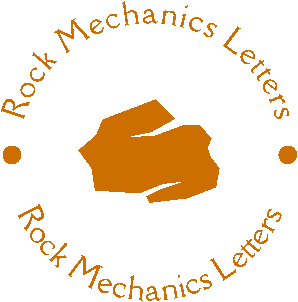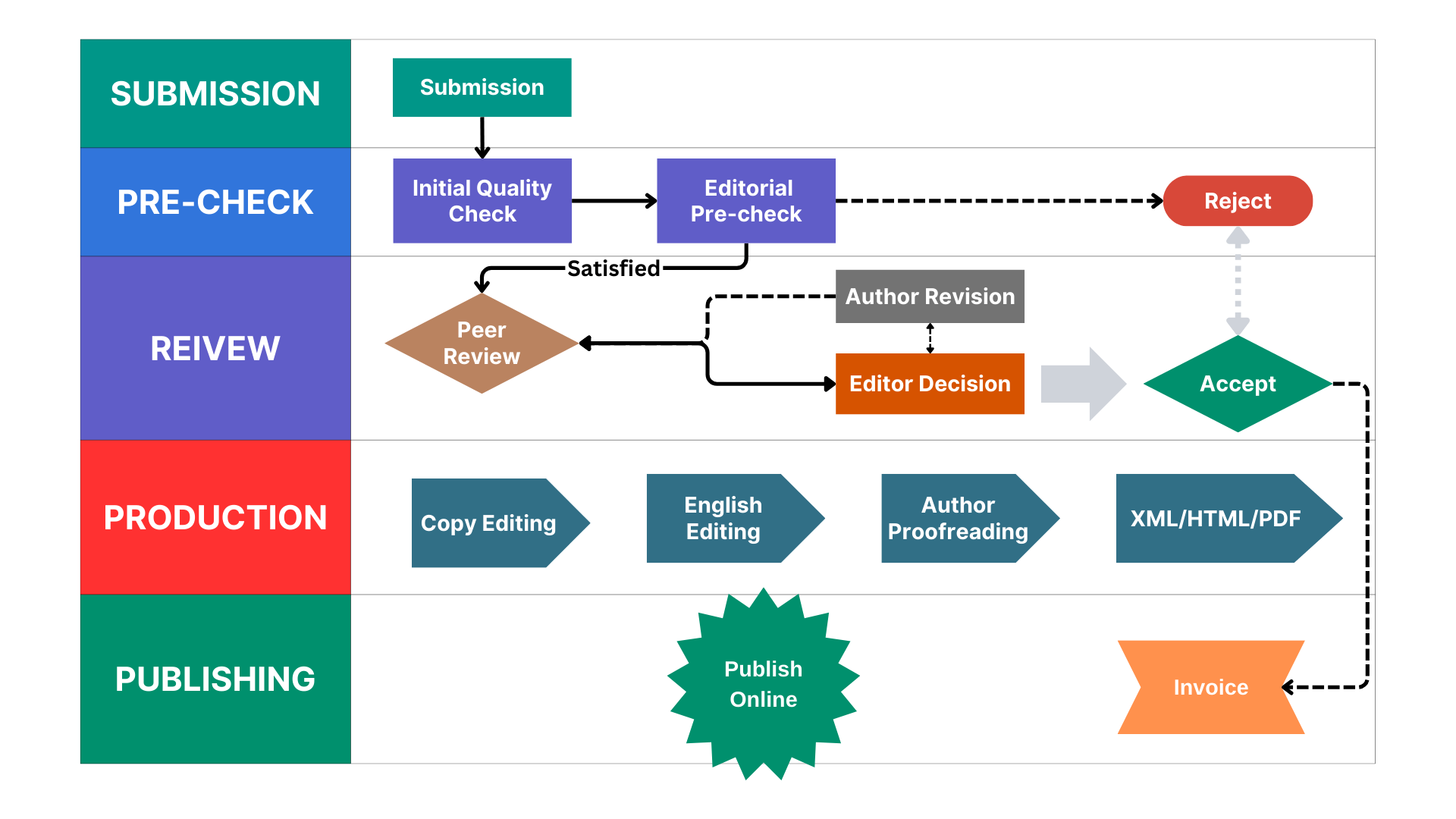
Rock Mechanics Letters
- E-ISSN: 3049-8996
- Quarterly Journal

Rock Mechanics Letters is committed to a transparent and open editorial process that upholds the highest standards of academic integrity. Our process ensures that every manuscript is thoroughly evaluated from submission to publication, with clear communication at each stage.

The Rock Mechanics Letters Editorial Process
Below is a detailed overview of our editorial workflow:
Upon submission, each manuscript undergoes an initial quality check. This step includes technical assessments such as formatting compliance and adherence to ethical standards. Importantly, we use tools like iThenticate to check for plagiarism and ensure that the manuscript's content is original. Manuscripts that do not meet the journal’s basic criteria may be returned to the authors for revision before proceeding.
Following the initial quality check, the manuscript is evaluated by the Editor-in-Chief or an assigned academic editor. This pre-check assesses the manuscript's scientific merit, relevance to the journal's scope, and potential contribution to the field. Manuscripts that do not meet these standards may be rejected at this stage, with clear reasons provided to the authors.
Manuscripts that pass the editorial pre-check are sent for peer review. Rock Mechanics Letters follows a double-blind peer review process, where the identities of the reviewers are concealed from the authors. Authors have the option to recommend potential reviewers. However, to ensure the integrity and objectivity of the review process, the following restrictions apply:
The peer review process typically involves at least two independent reviewers who evaluate the manuscript's quality, originality, and scientific rigor. Their feedback is then used to guide the editorial decision-making process.
If revisions are required based on the reviewers' feedback, authors are provided with detailed comments and suggestions to improve their manuscript. The revision process is transparent, with clear guidelines on how to address the reviewers' concerns. Authors are encouraged to carefully consider all feedback and submit a revised manuscript that meets the journal's standards.
After the peer review process is complete, the Editor-in-Chief or an academic editor reviews the feedback from the reviewers. Based on this feedback, along with their own assessment of the manuscript, the editor makes a decision on whether the manuscript requires revision, is accepted, or is rejected. This decision is communicated transparently to the authors, along with any necessary explanations or revision requests.
Once a manuscript is accepted, it undergoes several stages of final editing to ensure it meets the journal’s quality standards:
Rock Mechanics Letters follows the Principles of Transparency and Best Practice in Scholarly Publishing, all Vance Press editors are rigorously trained to detect and address ethical issues.
We adhere to COPE procedures for handling unethical behavior by authors, reviewers, or editors. Ethical issues raised by readers are investigated by the editorial office, following COPE guidelines.
Authorship disputes are managed according to COPE guidelines. If all authors agree, authorship can be updated via a correction. If not, we require an authoritative statement from the authors' institution(s).
For more details, please refer to the Publishing Ethics page on our journal’s website.
At Rock Mechanics Letters, we uphold the principle of editorial independence. The editorial decisions, including peer review outcomes and acceptance of manuscripts, are made without any influence from external parties, including sponsors, advertisers, or other stakeholders. The Editor-in-Chief and editorial team are solely responsible for the academic quality of the journal, ensuring that all published content meets our rigorous standards.
If you have any questions or concerns regarding our editorial process, please feel free to contact us: [email protected].